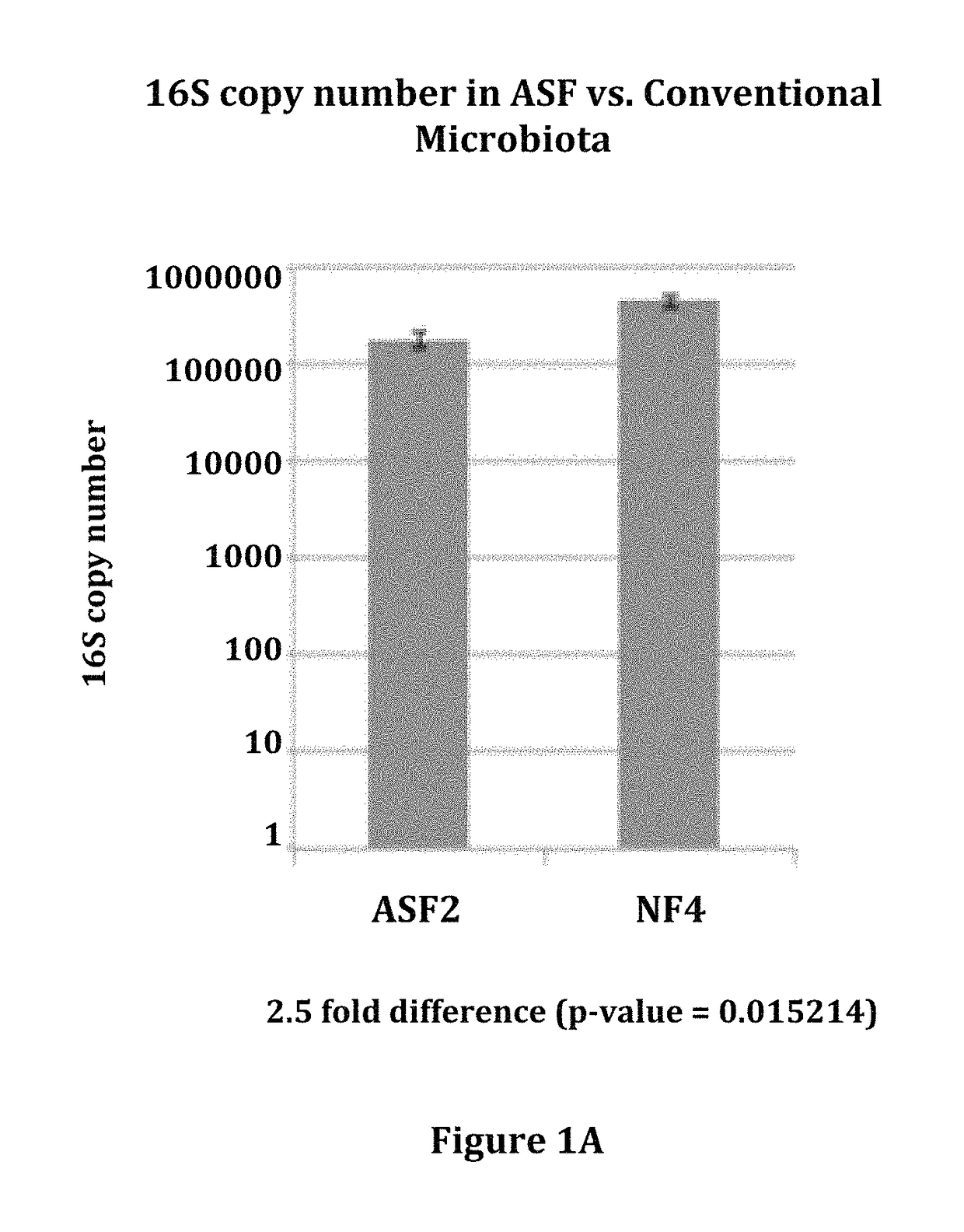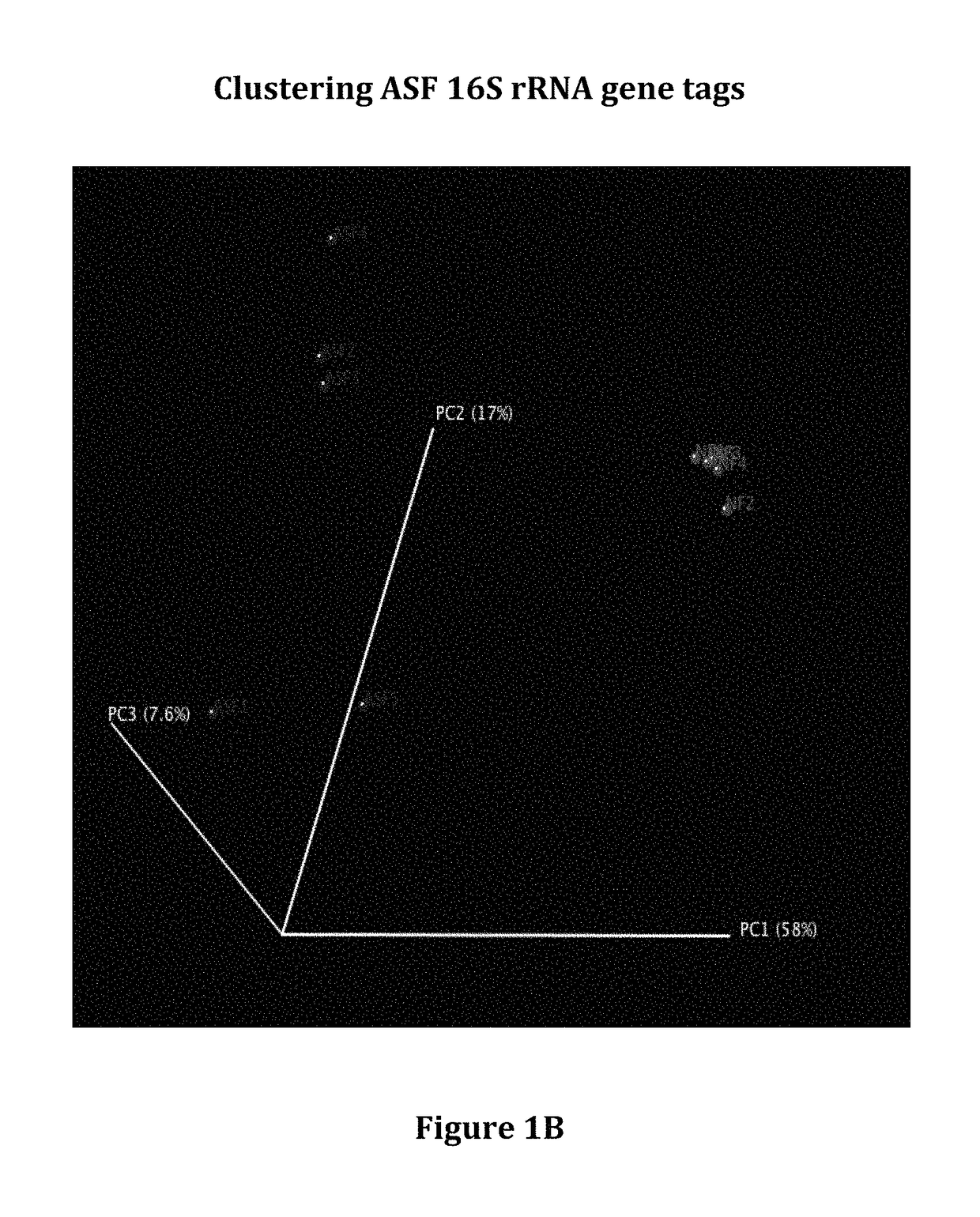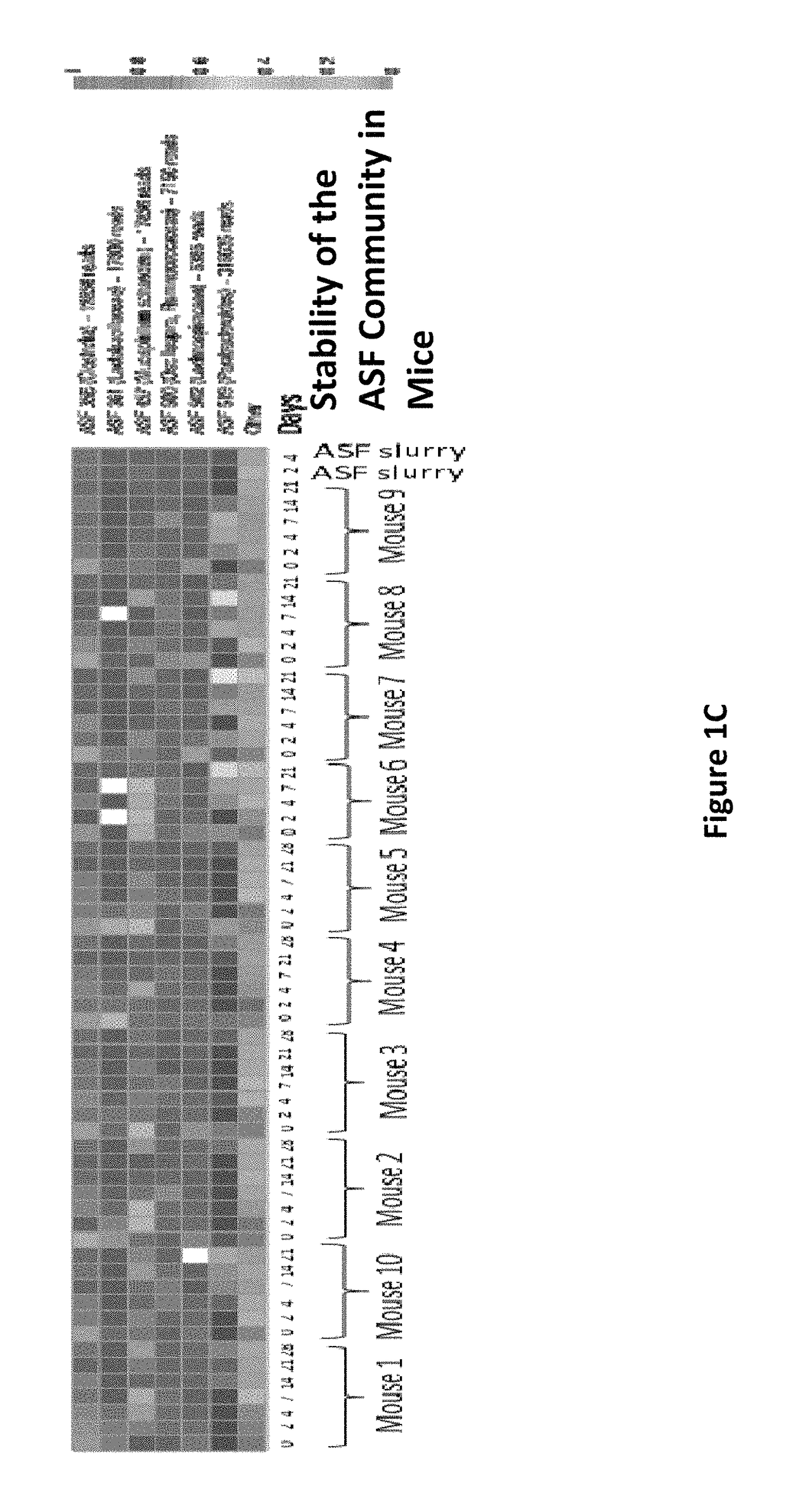Compositions and methods comprising a defined microbiome and methods of use thereof
a technology of defined microbiome and composition, applied in the direction of capsule delivery, synthetic polymeric active ingredients, medical ingredients of bacteria, etc., can solve the problems of reducing the effectiveness of antibiotics, only partially effective approaches in preventing/treating neurologic consequences
- Summary
- Abstract
- Description
- Claims
- Application Information
AI Technical Summary
Benefits of technology
Problems solved by technology
Method used
Image
Examples
example 1
ASF is a Distinctive Gut Microbial Community that Exhibited Resiliency Under SPF Housing Conditions
[0116]ASF consists of 8 bacterial strains developed in the 1970s that are collectively known to induce immune tolerance, and are currently used commercially to colonize immune deficient mice to maintain health. To characterize potential donors containing the ASF community, 16S rRNA gene sequencing was performed on fecal DNA obtained from ASF colonized mice housed in an isolator. Although there was only a small reduction in the overall abundance of bacteria in the ASF community relative to mice with conventional microbiota (FIG. 1A), the ASF community could be visualized as a very distinctive community on a UniFrac-based PCoA analysis (FIG. 1B). To determine the resiliency of the ASF in mice housed in SPF conditions, sequential fecal pellets were collected from ten mice for analysis by 16S rRNA sequencing (FIG. 1C). Six taxa were resolved at the depth of sequencing performed with Paraba...
example 2
Preparation of Mice with Antibiotics and Polyethylene Glycol Allows the Transplantation of ASF into Previously Colonized Mice
[0117]Mixed results have been reported regarding the transfer of conventional microbiota between rodents with some sources reporting successful transfer with repetitive inoculation, while others report that the use of antibiotics prevents effective transfer. Reasoning that significant reduction of the endogenous conventional microbiota would be needed for effective transfer of ASF due to its reduced membership, studies were performed to determine the optimal timing of microbiota transfer based on the response of conventional microbiota to the oral delivery of two non-absorbable antibiotics, neomycin and vancomycin. A maximal reduction of 16S rRNA copy number by approximately 4 logs was achieved within 72 hours of oral antibiotic initiation with the return of 16S rRNA copy number to baseline 5 days after discontinuing antibiotics (FIG. 2A). Having defined a tim...
example 3
Long-Term Taxonomic Resilience of the Transplanted ASF Community Established by the Ability of Parabacteroides to Inhibit Invasion of Bacteroides, but not Clostridia Genera into the Gut Microbiota Niche
[0118]Long-term taxonomic resiliency of the transplanted ASF community over four months evaluated by both unweighted Unifrac (presence-absence of taxa, FIG. 3A) and weighted Unifrac (relative abundance, FIG. 3A), revealed that the transplanted community rapidly established a new intermediate steady state in between the ASF inoculum and the conventional, pre-treatment community. The proportion of ASF sequence reads remained relatively stable after six weeks at approximately 40% in germ-free recipients and 50% in pretreatment conventional hosts both considerably greater than the 10% proportion of ASF community members normally observed in conventionally-housed mice (FIG. 3B). Resilience of the ASF community was largely determined by the persistence of Paracteroides in both germ-free and...
PUM
| Property | Measurement | Unit |
|---|---|---|
| length of time | aaaaa | aaaaa |
| weight | aaaaa | aaaaa |
| time | aaaaa | aaaaa |
Abstract
Description
Claims
Application Information
 Login to View More
Login to View More - R&D
- Intellectual Property
- Life Sciences
- Materials
- Tech Scout
- Unparalleled Data Quality
- Higher Quality Content
- 60% Fewer Hallucinations
Browse by: Latest US Patents, China's latest patents, Technical Efficacy Thesaurus, Application Domain, Technology Topic, Popular Technical Reports.
© 2025 PatSnap. All rights reserved.Legal|Privacy policy|Modern Slavery Act Transparency Statement|Sitemap|About US| Contact US: help@patsnap.com



